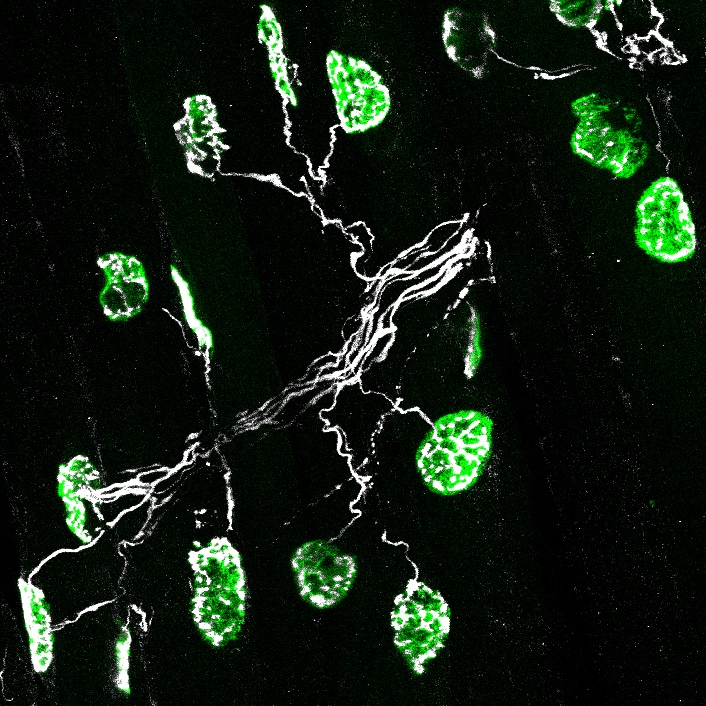Findings from HUN-REN Researchers in Szeged May Bring Us Closer to Understanding the Onset of ALS
In a recent series of studies conducted as part of an international collaboration, researchers at the HUN-REN Biological Research Centre in Szeged (HUN-REN BRC) have identified early signs of this incurable neurodegenerative disease. These findings could not only help detect the disease at an early stage but also contribute to slowing the deterioration of neuromuscular junctions (NMJs).
Amyotrophic lateral sclerosis (ALS) is an incurable neurodegenerative disorder in which immune processes may also play a significant role in disease progression. A major hallmark of ALS is the gradual loss of signal transmission from nerves to muscles at the neuromuscular junctions (NMJs). The exact cause of this degeneration remains unknown, but researchers are getting closer to unravelling the underlying mechanisms. A recent study co-authored by the team in Szeged represents one such step forward, with the findings published in Nature Communications.
In an international collaboration, researchers at the Institute of Biophysics and the Core Facilities of the HUN-REN Biological Research Centre (HUN-REN BRC), together with clinician-scientists at the Department of Neurology of the University of Szeged, investigated the role of signalling molecules known as chemokines, which are key mediators of cell-to-cell communication. Within this protein family, their study focused in particular on the chemokine CCL2, which plays an important role in the onset and progression of inflammatory diseases. Through its binding to the CCR2 receptor, CCL2 is a major factor in recruiting immune cells.

In their investigations, the researchers demonstrated an increased presence of certain immune cells (leukocytes and macrophages) in muscle biopsy samples from ALS patients. The same phenomenon was also observed in two experimental mouse models of the disease, with inflammatory processes already detectable at presymptomatic stages. Furthermore, detailed proteomic analyses confirmed that this immune activation is driven by the CCL2–CCR2 signalling pathway, and CCL2-positive cells were found to cluster around the animals’ neuromuscular junctions.

